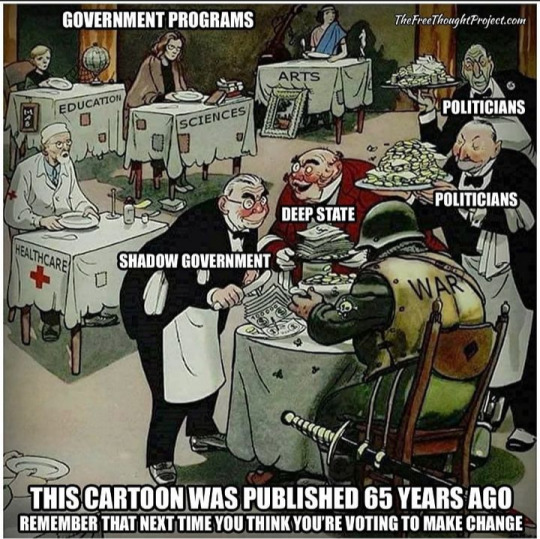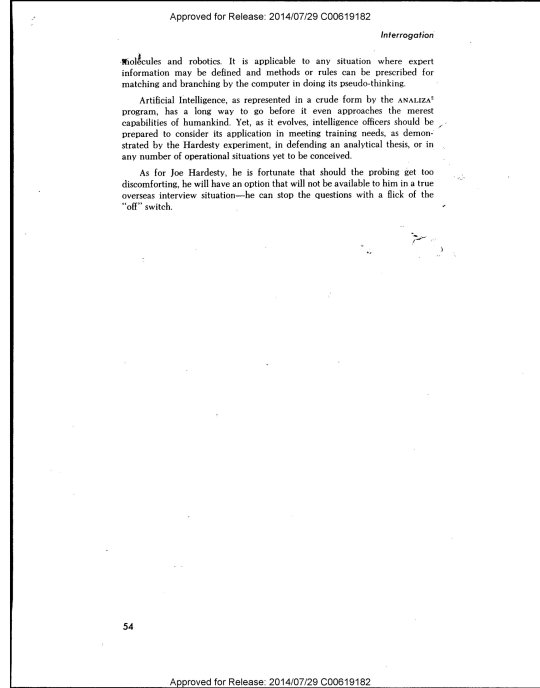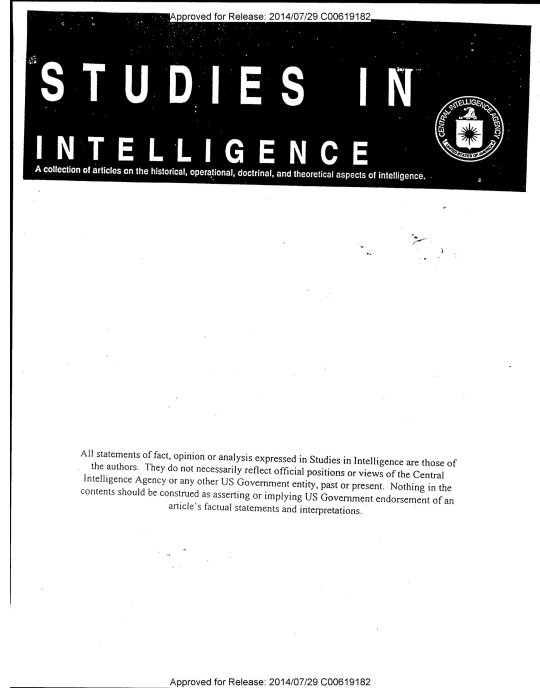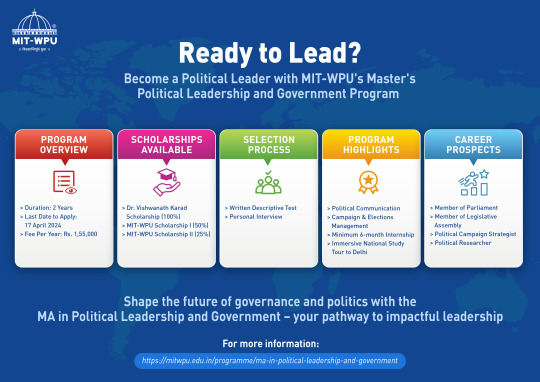#government programs
Explore tagged Tumblr posts
Text
The Affordable Connectivity Programs funding is expected to end early this next year. For those who don't know it gives a lot of people free or reduced Internet services.
I receive a 30 dollar credit each month off of my bill, and even then my bill is still $50/month. This is really going to hit hard, especially for people who currently receive free WiFi through the program. It's important people have Internet access in their homes, and it's something a lot of people cannot afford to lose right now. While yes public WiFi is an option not everyone has the ability to get themselves around to places that offer it.
Spectrum has a link where you can send an email asking to extend the program here
You can also contact your state representative too. You can use this link to look up who your representative is.
This program saved me during the pandemic when I lost my job, and even if it loses funding I will be fine for now, but that is not the case for everyone, especially with the rising cost of bills and internet access in general.
#affordable connectivity program#ACP#wifi#government funding#i recieved this email earlier today and idk how many ppl know abt the program but its rlly important#government programs#government
47 notes
·
View notes
Photo


Derek M. Ballard.
111 notes
·
View notes
Text

Nothing says Valentine’s Day like the government quoting Shakespeare to warn you against STIs. We hope you get a kick out of this 1990 poster from our Gov Docs collection!
Link to file: purl.fdlp.gov/GPO/gpo42651
9 notes
·
View notes
Text
9 notes
·
View notes
Text
Government programs

#art#artists on tumblr#corrupt government#government programs#deep state#politicians#shadow government
5 notes
·
View notes
Text
"How AI and Human Intelligence Work Together: The Story of a CIA Agent and an AI Bot in 1983"
Introduction:
As technology advances, the use of AI is becoming more and more common in different fields. One of the fields where AI is making a significant impact is intelligence gathering, and one story that stands out is that of a CIA agent and an AI bot. This blog will explore how AI and human intelligence can work together to achieve extraordinary results.
Section 1:
The CIA Agent and the AI Bot The story began when the CIA agent received an assignment to gather intelligence on a terrorist group that was planning a major attack. The agent knew that it was a challenging task that required gathering data from various sources and analyzing it to identify potential threats. However, time was limited, and the agent needed to act fast.
To help with the task, the agent was assigned an AI bot that could crawl the internet and collect data from various sources. The bot was programmed to identify specific keywords and phrases related to the terrorist group, which helped the agent to get a better understanding of the group's activities and plans.
Section 2:
The Benefits of AI in Intelligence Gathering AI is becoming more prevalent in intelligence gathering because of its ability to process vast amounts of data quickly and efficiently. In the case of the CIA agent, the AI bot was able to collect data from a variety of sources, including social media, news articles, and other online resources. The bot then analyzed the data and identified potential threats, which helped the agent to make informed decisions.
Section 3:
The Role of Human Intelligence in AI-Driven Intelligence Gathering While AI is a powerful tool for intelligence gathering, it has its limitations. AI algorithms are only as good as the data they are fed, and they lack the ability to interpret context and make judgments based on human intuition. This is where human intelligence comes into play.
In the case of the CIA agent and the AI bot, the agent was able to provide the necessary context and interpret the data collected by the bot. The agent's experience and expertise allowed him to identify potential threats that the bot may have missed, and to make informed decisions based on his analysis.
Section 4:
The Future of AI-Driven Intelligence Gathering The story of the CIA agent and the AI bot is just one example of how AI and human intelligence can work together to achieve extraordinary results. As AI technology advances, we can expect to see more collaboration between humans and AI bots in intelligence gathering and other fields.
However, it is important to remember that AI is not a replacement for human intelligence. Instead, it is a tool that can help humans to process and analyze vast amounts of data quickly and efficiently. In the future, we can expect to see more AI-driven tools and technologies that are designed to support human decision-making rather than replace it.
Conclusion:
The story of the CIA agent and the AI bot is a perfect example of how AI and human intelligence can work together to achieve extraordinary results. By leveraging the power of AI to collect and analyze vast amounts of data quickly, and combining it with human intelligence to provide context and interpret the data, we can make informed decisions that can help keep us safe in an ever-changing world. As technology continues to advance, we can expect to see more examples of AI and human intelligence working together to achieve great things.








https://dailydeclassified.blogspot.com/.../how-ai-and...
3 notes
·
View notes
Text
Not to mention that not using a program you are enrolled in can sometimes result in reductions for you, or losing access altogether.
I think it's important to remember, as a rule of thumb, if you take advantage of a social service, it actually makes it easier for other people who need that service to access it. Most of the time, when these services get cut, it's because politicians will look at usage and say "see, no one is really using this thing, we can afford to trim the budget for food stamps by at least half". Whereas if you decide to step up and use these programs, even if you feel like you "don't really need it", at bare minimum it's another data point advocates can use to say "hey, look, people are using this thing, this is an important service we are providing, do not cut our funding".
121K notes
·
View notes
Text
So everyone in Lyon County of Kansas, like most of the State now have spent far too much time online?
They've been dictating the internet, spouting their political addendums through the church: They've lead poisoning, are radioactive, there are GMOs growing everywhere & we have little genius mutants popping up un-allowed/unable to attend school due to health, species, & curriculum?
Wouldn't that mean they all have to be separated & moved by force to the abandoned small towns which have suffered massacre & COVID, to enclosed communities, prisons, institutions, & due to widespread drug abuse, may not socialize or speak to eachother: Especially on Facebook?
Doesn't that mean nobody in the state is allowed to learn how to read or touch money? OMG, a toddler at daycare/headstart just became an enemy insurgent for stating that either meth or reefer is legal. Tell the administration to sell the kid into prostitution, make paliperidone of the parents, pay them expensive student loans, and go into hiding.
Wouldn't that mean we all get huge reparation cheques from the State of Kansas as well as compensated for the cost of our homes & cars?
What about my psychological trauma lawsuit against the establishment having been told I has to be nice to Englishmen or women who call their twat a djynu, djynur, or vuh-gee-nuh?
Wouldn't that mean they would be disallowed the right to attend church and told to Hail Satan if they exhibited any religious or cultish behavior? Such as drinking their fucking juice or toast for breakfast? That might be communion and it might lead to cannibalism or communism!!! Do remember, based on HOW MANY reports and complaints I have made against that community, as well as everyone else: never should an Emporian or anyone with communication with Emporia be allowed near me.
The whole county has medical concerns, and the children of USD 253 must be institutionalized FOR THE REST OF THEIR LIVES.
Fuck you Wolf Creek.
That's right.
While the Senator is counterfeiting remind the woman that money just comes RIGHT OUT OF HER TWAT and it goes DIRECTLY into my pocket. She may spread her legs and spread her legs for...
how about a blobfish. They are voted to be the planet's ugliest species. While we are in GMO-ville tell that english speaking whore to spread her legs and spawn and spawn properly.
#Protocol#Government#Government Protest#Government Programs#Life#Gang Activity#People#Kansas#Meth Cleanup#Meth#dope#Shabu#シャブ#Radiation#Wolf Creek#Nuclear Power#Medical#USD 253#USD 259#Religion#Buddhists#Buddhism#zen#Lawsuit#Love#Things#Money#Moolah#Gimme Gimme Money#Mo Money
0 notes
Text
A take a look at how a few of Trump's picks to guide well being companies may assist perform Kennedy's overhaul
The group that President-elect Donald Trump has chosen to guide federal well being companies in his second administration features a retired congressman, a surgeon and a former talk-show host. All may play pivotal roles in fulfilling a political agenda that might change how the federal government goes about safeguarding Individuals’ well being — from well being care and medicines to meals…
#116166607#Access to health care#Addiction and treatment#Article#COVID-19 pandemic#general news#Government programs#Health#Immunizations#medical research#medication#Politics#public health#Washington news
0 notes
Text
youtube
heres a video tour of the new basement suite i moved into, and an explanation of the annoying capitalist reason why i had to move...
hope u like it!
#guided tour#new house#basement suite#transfem#transfemme#autistic#autism#tourette syndrome#tourettes#disability#capitalism#moving#moving day#house tours#mtv cribs#disabled#queer elders#capitalist hell#government programs#trans blog#vlog#vlogging#wholesome#funny#plushies#Youtube
0 notes
Text
Hi! Funding for the ACP ended in April 2024!


Yeah! This April is the LAST MONTH all of us relying on this program will be receiving any credit from it! The ACP was some kind of ONE TIME GRANT of money that has run out! "The ACP is managed by the Federal Communications Commission (FCC) and provides low-income households with $30 a month to purchase internet services and equipment. Since its creation, the ACP has provided over 23 million families, including over 366,000 in Massachusetts, with financial assistance for broadband access. However, due to the popularity of the program, ACP funding is estimated to expire in the coming year."
What can you do about this? Same as every damn problem in the United States! You just gotta email a representative! That's really all you can do!
I will say, cynicism aside, I emailed many of my own states officials and I did receive an email back from one of them, Senator Markey, claiming he and his colleagues ARE trying to do something about it. It's obviously going to take for fucking ever to get anything implemented, but at least they're actually aware of the issue and trying to fix it. "That is why on October 19, 2023, I joined my colleagues in urging congressional leadership to extend funding for the ACP and create a long-term solution for this critical program. In addition, in October 2023, I joined my colleagues in introducing the Promoting Access to Broadband Act (S.3024), which would establish a grant program for states to inform qualifying individuals of their eligibility for the FCC’s ACP and Lifeline programs." If you live in a different state, emailing your goverment officials may be even more important to getting these things passed.
I know every post on here is like "call your rep! call your rep!" but I actually emailed and got a response, so! Try it out! You can try these links to use pre-written emails.
Good luck.
Turns out with the Affordable Connectivity Program, ISPs CAN NOT shut off your internet.
Seriously. If you’re living in the US, and you’re at or below poverty line, sign up for the affordable connectivity program. it gives you like $30+ a month off your current internet bill and it makes it so they can’t disconnect you if you don’t pay them.
26K notes
·
View notes
Text
Read This To Learn All About Home Mortgages
TIP! Now is the time to try refinancing your home even if you are upside down on the mortgage. The Home Affordable Refinance Program (HARP) has been revamped to let homeowners refinance their home regardless of how underwater they are. To find the right home mortgage, you must understand what goes into a mortgage. How much knowledge do you have about home mortgages and its terms? The information…

View On WordPress
0 notes
Text
youtube
#youtube#militarytraining#Executive Graduation#Government Training#Cohort 36#Defense Department#National Security#Federal Leadership#Top Officials#Executive Education#Government Programs#Defense Strategy#Leadership Skills#Leadership Development#Strategic Leadership#Executive Leadership#Management Training#Top Graduates#Government Leaders#Public Service#DOD Executive Program#Military Leaders
0 notes
Text
Explore Your Leadership Potential with MA in Political Leadership and Government at MIT-WPU

Master the art of Political Leadership with an immersive 2-year program by MIT-WPU. Gain in-depth knowledge, practical experience, and career prospects in various political spheres. Apply Now !
0 notes
Text

Moses Soyer’s oil painting, Young Girl, is one of the works on view in A New Deal: Artists of the WPA from the CMA Collection at Canton Museum of Art. The exhibition is a reminder of one of the best social programs ever created by the US government and the positive impact it had on the country during one of its hardest periods.
From the museum about the exhibition-
Against the backdrop of severe economic strife caused by the Stock Market Crash of 1929, President Franklin Roosevelt created the Works Progress Administration (WPA), which put roughly 8.5 million Americans, including more than 173,000 men and women in Ohio, to work building schools, hospitals, roads and more. Within the WPA was The Federal Art Project (FAP) which provided employment for artists to create art for municipal buildings and public spaces. The FAP had a non-discrimination clause that meant it attracted and hired artists of color and women, who previously received little attention in the art world. The only guidance the government offered about subject matter was to depict the “American scene” and stipulated no nudity or political issues. The goal was for artists to help the United States develop its own distinct American style of art, especially as artists in other parts of the world were forbidden freedom of expression and ordered to create artworks that projected the beliefs of their governments.
Though the WPA artists in the United States shared the common goal of capturing life in all its variety and promoting national pride, they each had different approaches, and many modified their typical subject matter to fit whatever project they were assigned. The arts before and after the New Deal relied on private patronage and the philanthropy of wealthy and elite institutions: galleries, museums, dealers. But during the WPA, art wasn’t a luxury good, it was seen as an essential part of our democracy. Artists were seen as professional workers who were making important and significant contributions to American life. The artworks made under the WPA became the collection of the American people and were put in public collections – hospitals, schools, post offices, housing projects, etc. – ensuring they were part of communities. The arts were seen as an important part of a democratic society and the American way of life, with a richness of experience and accessibility to culture.
While artists were offered opportunities through the WPA, they were far from immune to the distress caused by the Depression, and many still struggled to make a living. Will Barnet detailed a bleak scene he came across, saying:
“It was like a war going on. There were bread lines and men lined around three, four, five, six blocks waiting to get a bowl of soup. It was an extraordinary situation. And one felt this terrible dark cloud over the whole city.”
Moses Soyer also described the hardships artists experienced, saying,
“Depression–who can describe the hopelessness that its victims knew? Perhaps no one better than the artist taking his work to show the galleries. They were at a standstill. The misery of the artist was acute.”
The FAP supported the creation of thousands of works of art, including more than 2,500 murals that can still be seen in public buildings around the country. The FAP also supported art education and outreach efforts, including traveling exhibitions and art education programs for children. The WPA and FAP had a significant impact on the American art scene, and many of the artists who participated in the program went on to become important figures in the art world.
A New Deal: Artists of the WPA from the CMA Collection highlights the lives of artists from our Permanent Collection who worked for the WPA, and in doing so, fostered resilience for a struggling nation. You will learn about the projects they worked on, the subjects they were interested in, and how their own lives were affected by the Depression. Each of these artists helped to foster the nation’s spirit and prove that even in the darkest of times, art serves as a uniting force to collectively lead people into a brighter future.
And about Moses Soyer and his painting from the museum-
The Depression set the mood for most of Soyer’s art expression, and his portraits of people seem to be preoccupied with a sad secret. His portraits were often of solitary fi gures, using professional models or his friends, capturing in these paintings the spirit of his sitters, their dreams or disillusionment. He is best known for his introspective fi gure paintings of weary, melancholy women in muted colors, matching the mood of his sitters with the pigment in his paint. He was inspired by artist Edgar Degas, who used color expressively.
On the museum’s website you can find both the artwork on display for the exhibition and also a gallery of the museum’s entire collection organized into several categories.
#Moses Soyer#Art#Canton Museum of Art#Art History#Art Shows#Canton Art Shows#Works Progress Administration#Drawing#Federal Art Project#President Franklin D. Roosevelt#Franklin D. Roosevelt#Government Programs#Great Depression#History#Ohio Art Shows#Painting#The New Deal#WPA
0 notes